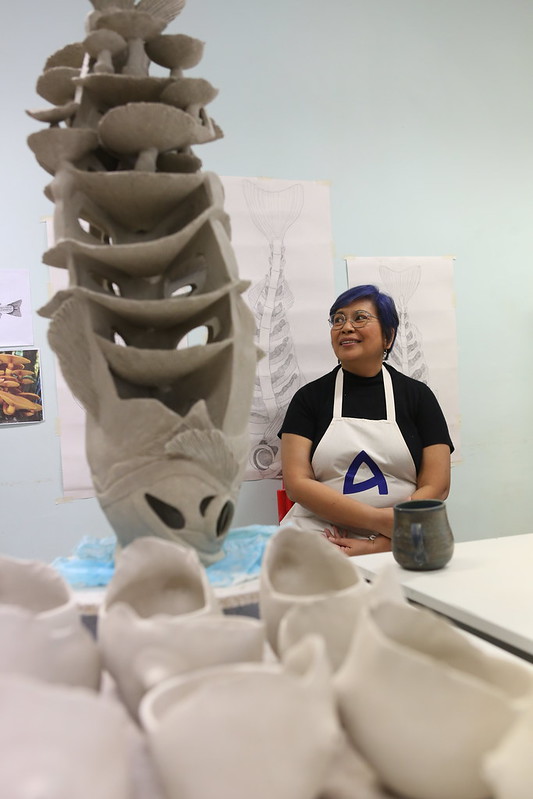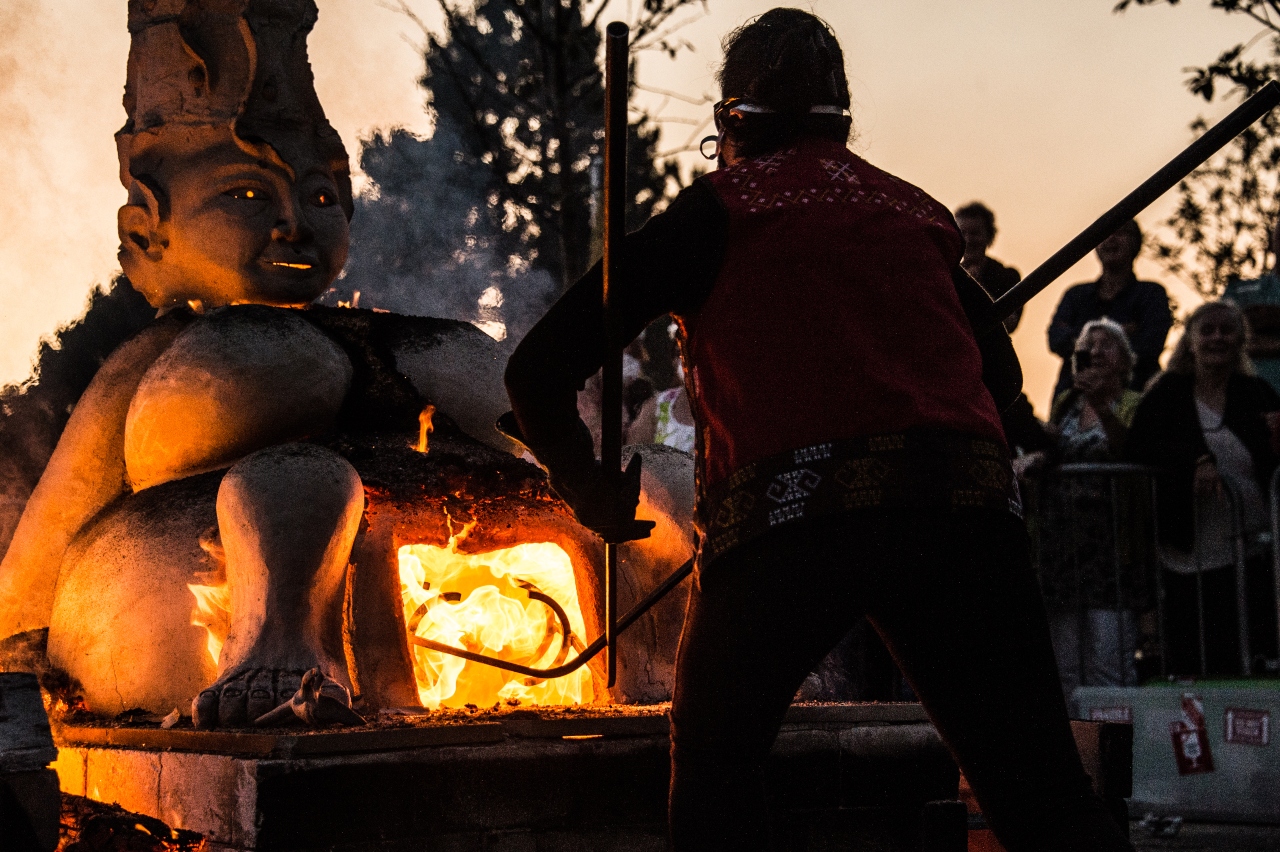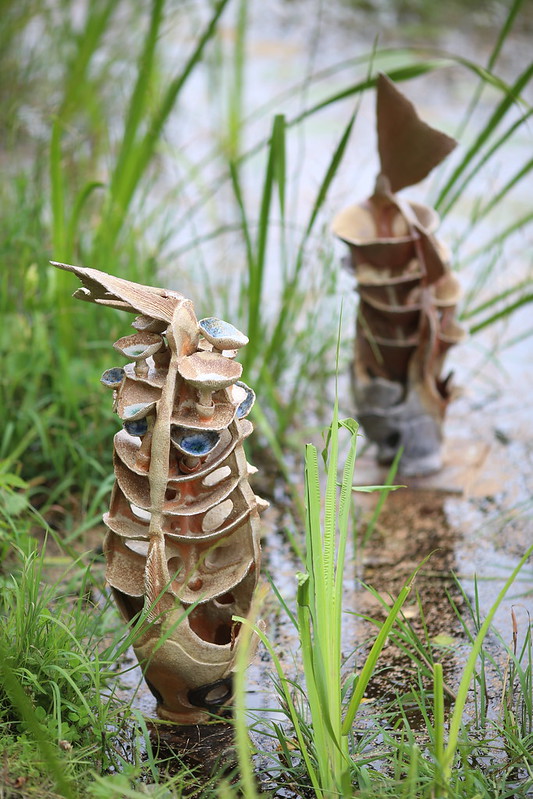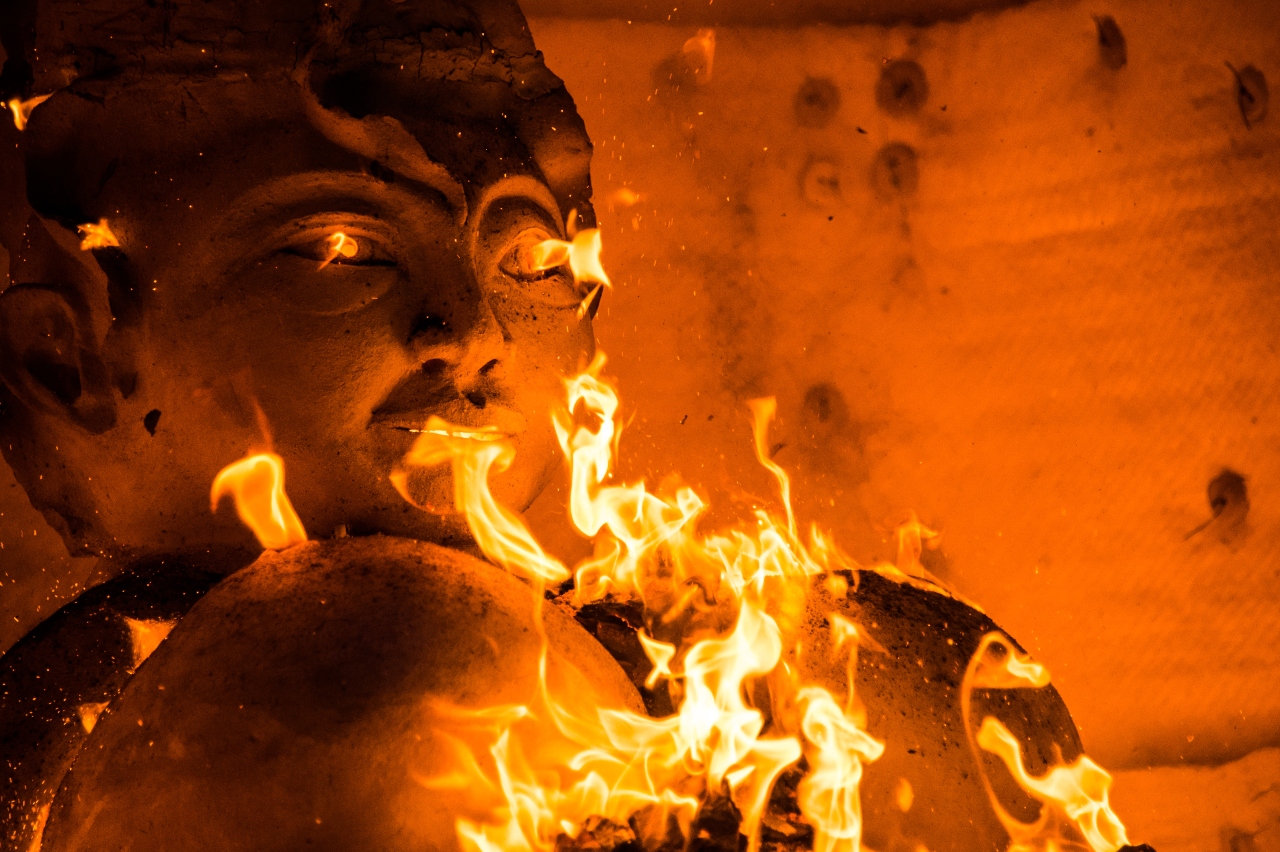With clay as her canvas, ceramicist Rita Badilla-Gudiño shapes masterpieces that enthrall—and advocates for her country on the global stage.
When I ask her to describe just what she does in her own words, Rita Badilla-Gudiño says in Taglish, with a laugh, “So my press release is that I’m a woman divided.” For she is, she elaborates, many things: a wife, a mother, a businesswoman, a teacher, and an artist.
As co-founder of Tahanan Pottery Shop and Studio with her husband Vicente Gudiño, she holds classes and workshops to offer the curious a space to explore pottery. She does this apart from teaching at the College of Fine Arts at the University of the Philippines, where she established the Ceramics Studio and, together with her colleagues, the minor program in ceramics techniques.
She is, as well, a ceramicist who has earned acclaim overseas. Under this umbrella, she is working toward multiple goals: to make the Philippines recognized in the ceramic arts; to spread the use of stoneware clay, a sturdy type of clay, in the country; and to make Filipinos fall in love with her chosen art form.
“I want to share this passion…the joy of working with clay with other people [and] what clay has done for me,” she says. “Working with clay…with our hands…connects us deeply to what it means…to be human. Because there’s interpersonal communication happening between you and the medium…. Clay mirrors you because it replies to your touch. If you push it, if you pull it, if you poke a hole, that’s clay responding to your touch. So, for me, clay makes us better people. Good people. More sensitive to our world, to our place in the world, and our community.”

Origin story
Pottery wooed Badilla-Gudiño in her first year studying industrial design at UP. She was entranced, she says, with the prospect of transfiguring something delicate, like artwork made with raw clay, into—after putting it into a kiln—an object that lasts. Since UP then didn’t offer any ceramic arts programs, she turned to research, books and magazines about the subject. Later, she interned at a ceramic art production and exporting company, which allowed her to immerse herself in clay. What clinched it for her, though, she says with a chuckle, was a movie—Patrick Swayze’s 1990 supernatural romance Ghost. In it, Demi Moore plays a potter, Swayze’s love interest who he has to rescue from beyond the grave.
Required to work for four years in industrial design since she was a government scholar, she worked as a product designer at the Design Center of the Philippines, on top of illustrating children’s books. After completing two of the required four years, she accepted an invitation to teach at UP to complete the remainder. Around this time, though, she realized that she had to devote her life to pottery to grasp it fully. And so, closing the door on other avenues such as her illustration career, she would embark on the work that would engage her for life.
READ ALSO: A Beautiful Mind: Clair Concepcion-Barberis Finds Soul Purpose In Her Creative Endeavors

Spreading the love
In her days as a newcomer, only a few ceramicists were active, mentored by the legendary Jon and Tessy Pettyjohn. Badilla-Gudiño’s work at Tahanan and UP teaching pottery has, thankfully, helped advance stoneware clay and the art form itself. Popping up around Metro Manila nowadays, for example, are ceramics studios, some of which are enterprises founded by Badilla-Gudiño’s students.
But there is still more to do with promoting stoneware clay. Though the Philippines has the raw materials for making it, we still lag behind other countries in producing it commercially. What bottlenecks it is the cost of manufacturing—a situation Badilla-Gudiño is endeavoring to one day overturn.
READ ALSO: Quiet Elegance: Michelle See-Tan Is An Icon Of Her Own

Birthing a masterpiece
For inspiration, Badilla-Gudiño looks to her life, from the important events to the everyday happenings. It was a major life event—giving birth—that produced her MFA project and piece de resistance. Lual (“birth”) is a kiln sculpture fashioned as a woman giving birth, which emphasizes the figurative similarity between childbirth and firing clay. It, says UP, is the first of its kind in the country. Having been made into a working kiln—Lual can produce, or “birth,” ceramic figures called Sibol (“offspring”)—Badilla-Gudiño’s masterwork falls under the new category of kiln art, where the kiln, itself a sculpture, is fired live in front of an audience.
Badilla-Gudiño had to work on Lual on her own. Since she was a trailblazer with Lual, she had no models to take inspiration from. Also, with stoneware clay not available for purchase in the Philippines, she had to develop her own clay and give it a kayumanggi (“brown”) color to represent herself. And then, of course, came the daunting task of creating the kiln’s massive woman form.
Lual would garner accolades from abroad, along with invitations to reconstruct it. One of them was from the International Ceramics Festival, the heavyweight among ceramics events in Europe. In a recent survey, Badilla-Gudiño says, participants declared the firing of Lual among the best shows in the festival’s history. She also showed her work and research for Lual at the 57th National Council on Education for the Ceramic Arts (NCECA) convention in the US. Here, she received an invitation to build and fire Lual this January at the Indian Ceramics Triennale.
Badilla-Gudiño shares that people who have watched her fire Lual say that they are better able to comprehend her art, as well as motherhood—how, because prior to firing how a piece turns out always remains to be seen, pottery is very much like giving birth. “Even men would come up to me and they [would] say, ‘I totally understand. I totally can relate with your work because we have mothers, we have sisters. So I know now how it is to give birth, even if I’m not capable, gender-wise, of giving birth’,” she tells me.

Crafting life and death
Other than life, Badilla-Gudiño bases her work on nature. “In my past life, before I got married,” she shares, “I was a mountaineer, a sailor. So I’ve been drawn to places where…the earth reaches out to the sky or where the sea meets up…with the earth.” It makes sense, then, that she, as she says it, creates art using the elements: clay, from earth and water; fire to bake it; and air to cool it.
For instance, there are her showpieces at the 23rd iteration of the prestigious Kohila Symposium, a wood-fired ceramics event in Estonia, where specially chosen ceramicists gather to create new works and showcase them. Badilla-Gudiño, as with Lual, made history again. Besides being the only Asian to attend this year’s event, she is also the first ever Filipino to join Kohila since the symposium began.
According to Kohila event co-organizer Lumi Kristin Vihterpal, Badilla-Gudiño had arrived in Estonia with her idea already formed. Spurred on by the pandemic, she had started thinking of life and our proximity to death, which drove her to find clarity and hope. To convey this via clay, she designed fish sculptures, which she called Thriving, that evoke the animals’ skeletons. The sculptures are meant to personify how fish bones become new homes for fungi: a diorama of death and decay, yes, but also the rebirth that comes after. Badilla-Gudiño intends for people to, upon seeing it, reflect on the impermanence of human life and its inevitable end. That, in turn, is to make us value all the more our time on Earth.
Her work drew the admiration of Vihterpal and her co-organizer Jekaterina Kultajeva, who mentioned that Badilla-Gudiño likes to tackle subjects that are all-encompassing, bigger than the day-to-day. Badilla-Gudiño had from the beginning wanted the fish sculptures jutting out of a body of water upside-down. Because it was similar to a previous Kohila display, Vihterpal and Kultajeva were initially on the fence about it. After seeing the presentation, though, Vihterpal confirms that Badilla-Gudiño, understanding how her work was going to look when placed in a setting, had the right idea all along. “We love…how she thinks about the installation [of her work, besides the style of it],” Kultajeva says. “She [did] the research…and it shows her [to be] a very methodical person.”

Future avenues
Badilla-Gudiño currently has many plates spinning. As the year draws to a close, she is finishing up Tahanan’s anniversary festival, which began in October. Next, she will turn her attention to the Indian Ceramics Triennale and to furthering the ceramic arts in UP. Perhaps, she hopes, she might turn it into a major someday.
Having obtained honor for her country, what else would she still like to achieve? To that, she gives me a down-to-earth answer. She would like to continue with pottery. She would like to further grow as an artist, too. (You see, she feels as though she is still a pupil herself, learning from other artists, which she brings home with her to pass on to her students.) And, besides that, she would like to get more opportunities to show her work overseas.
I also ask Vihterpal and Kultajeva what else they want to see from her. Kultajeva tells me she would like to see Badilla-Gudiño explore different formats. Or, she muses (Kohila being a once-in-a-lifetime occasion), Badilla-Gudiño might take on a joint project at another event. Vihterpal says, “Well, we would like to see her blossom…. She definitely has a specific handwriting as an artist, and we would like to see her continue to flourish [with] her signature in [the] arts.”
They will have a lot to see in the future. With the Triennale in India and other invitations to exhibit Lual, besides the ideas brewing in her head, Rita Badilla-Gudiño is, if she hasn’t already done it, well on the way to embossing the ceramic arts with her indelible fingerprint. Out there, we could say, the world is waiting.
Banner photo courtesy of Annika Haas via Rita Badilla-Gudiño.





